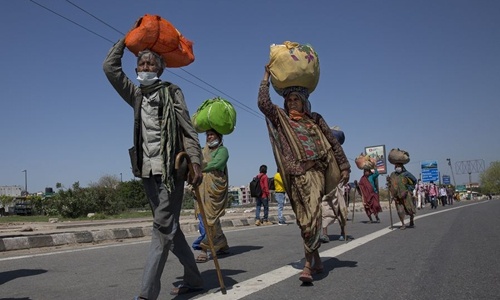The world is indeed full of possibilities and from a tiny yellow butterfly flying merrily in the sun to a wild flower that grows on a pebble in the Himalayas, everything has a purpose, a meaning. The pandemic has pushed many of us into a contemplative and reflective space where we are forced to come to terms with how great the gift of life is and what it means to be alive when every nook and corner of the world is reporting tragic deaths and exposing human vulnerabilities unlike before. When the news of death tolls echoed through our television screens, social gatherings became a thing of the past and each person began to be seen as a potential carrier of the virus to be doubted, as fear and suspicion replaced sensitivity, empathy and understanding. Was the onslaught of the pandemic going to transform us into doubting, suspicious, insensitive beings bothered only about our own well-beings while marginalising, stigmatising and pushing others to lead lives of misery and pain? When manufactured videos of ordinary muslim fruit-vegetable vendors selling infected products went viral, we reported several instances from across the country where they were heckled and killed as communal frenzy replaced objectivity-rationality. Women from northeastern states were groped and harassed and ink smeared on their faces as they were seen as Chinese-like and thereby responsible for spreading the virus in India. While migrant workers accompanied by women and children undertook arduous journeys to their native towns and villages without food or water, the well-to-do city elite stocked up on daily staples to ensure a happy quarantine. For one side of the economy, mobile applications and home-deliveries of essentials meant a prolonged occasion to spend quality time with family and catch up on hobbies, for the other half of India it meant joblessness, growing debts and an uncertain future where neither food nor health nor education could be afforded any longer as uncertain futures and bleak tomorrows overshadowed all hoped. Smartphones screens lit up for prolonged hours as they became the newly discovered classrooms of a pandemic hit world and quarrels for space in the living room became an everyday affair for couples in high-rise apartments and gated communities as work from home became the trend. But unfortunately neither school nor work could be shifted online for most Indians contrary to what assertions of a newly emerging affluent digital India would have us believe, as factories, construction sites, industrial units, mines and brick kilns closed so did the meagre waves of its workers who no longer could afford even a watery dal accompanied by a dry chapati twice a day and what can be said about education? As state owned schools shut their doors for students, it was as if even the distant dream of an educated and thereby empowered future disappeared from their eyes. With many of them either being married off as children or entering the labour force at a premature age as workers in roadside eateries, farm lands and as neglected and exploited child labourers in industries and factories- these children lost their childhoods, lost the slightest chance they had of breaking free from the vicious cycle of poverty, marginalisation and injustice. Headlines read how adolescent girls were sold off so that the family could afford a few days of food, how children starved to death in their parent’s arms as migrant families walked for thousands of kilometres and how the gigantic state machinery with phenomenal fiscal and infrastructural strength displayed mighty negligence of their existence pushing them into a plight that is worse than unwanted pests on an agricultural land to be ruthless burnt away, uprooted and diminished.
The plight of those who were especially down the socio-economic ladder was hard to bear for any sensitive mind but what enhanced the pain was the widespread apathy on part of both the state as well as those who were better off or in positions of privilege. The sheer selfishness and narrow existence of those on the upper rungs of society was nakedly visible, the apathy and ignorance displayed by the mighty state apparatus became more manifest than ever as food prices rose, insufficient trains and public transport or high ticket prices compelled the majority of the displaced migrants to undertake arduous journeys back home on foot only to go back to villages where they were unwanted and seen as additional burdens in family’s where financial strains had piled up and pushed people into irreversible trenches of cyclic poverty, exploitation and sheer darkness. Who would feed their children, who would ensure that healthcare reached the pregnant woman who bled to death in labour in the scorching summer heat on a highway in full public gaze and what about the migrant workers who were brutally crushed to death by a speeding train scattering their dry, stale rotes on the railway tracks like petals of a flower crushed under the mighty boots of an insensitive spectator?
As days passed by and turned into months, people began to come back to the cities in search of employment often at lower wages than earlier but with a desperation that was unprecedented, a common assertion was that even if coronavirus didn’t end up killing the poor, hunger and starvation certainly would. And what did the city’s offer to them? The same cities whose roads and buddings they built, whose apartments and lavish malls they carved with their blood and soil and the gated communities of the elite who shunned them away just like dust on a mirror? Whose cities were these, whose villages were they, whose nation was it? In the setting of the sun, in the distant night sky, in every blood cell and in every breath, they ask me a question that I have no answers for. If a yellow butterfly, a wild flower or even an insect have a home on this vast planet, why were thousands of my contemn orphaned in the most difficult hour?














